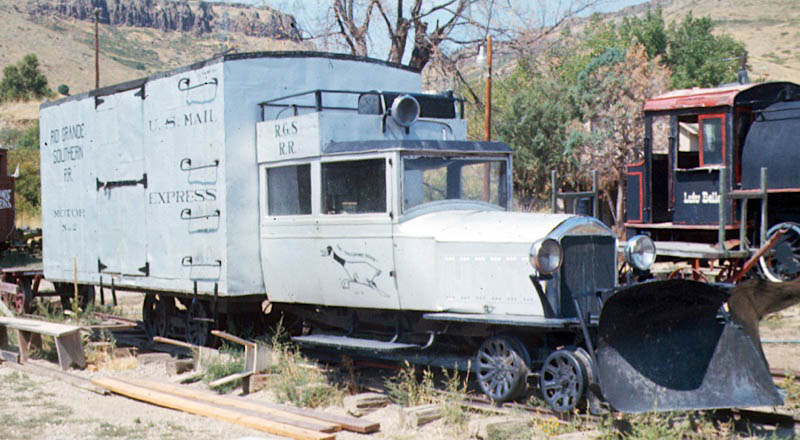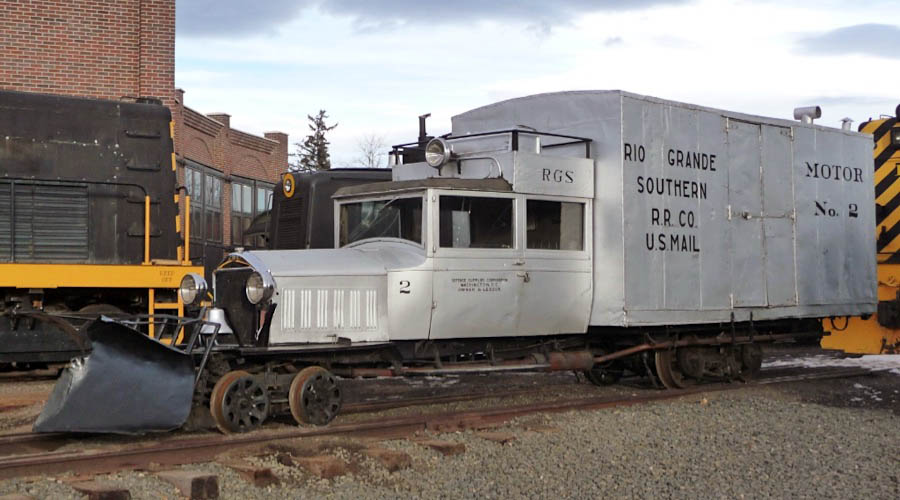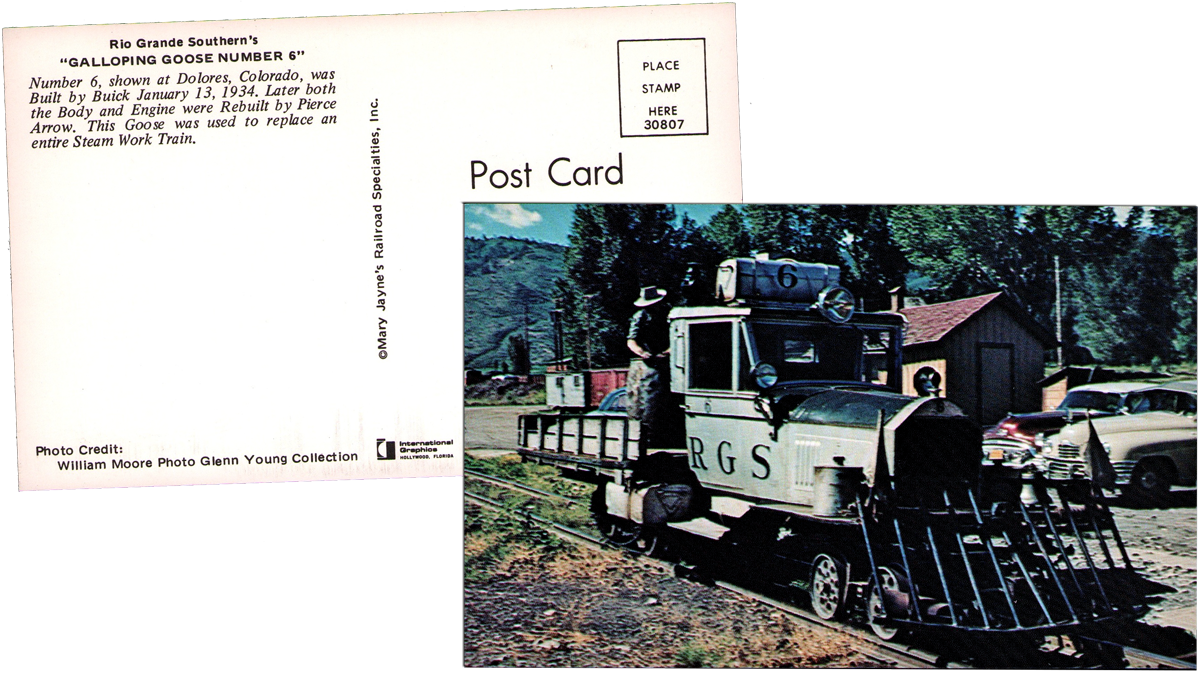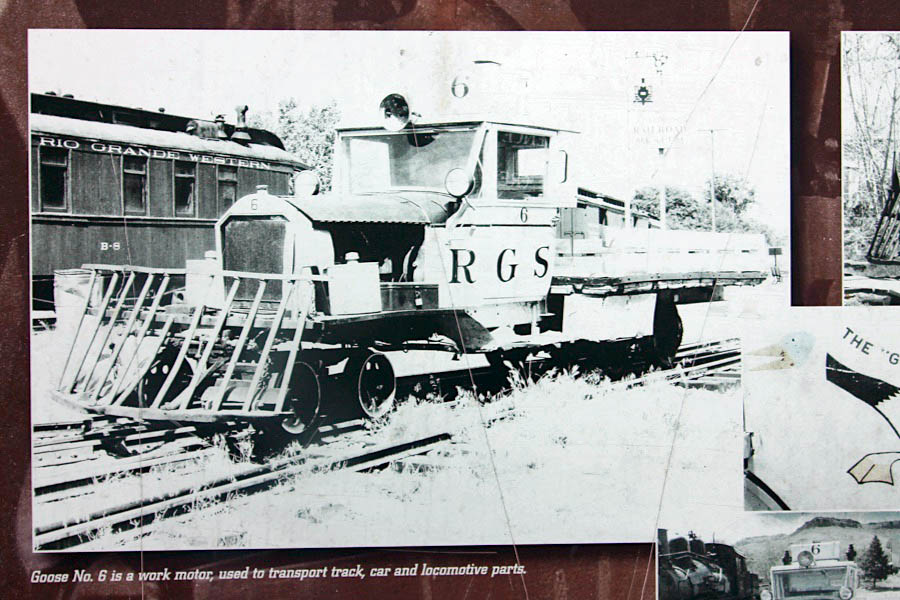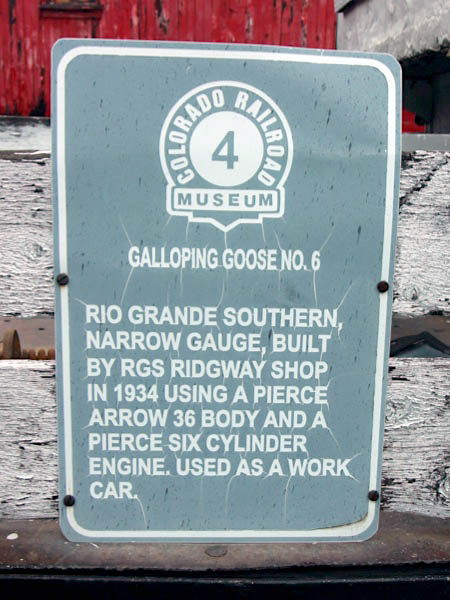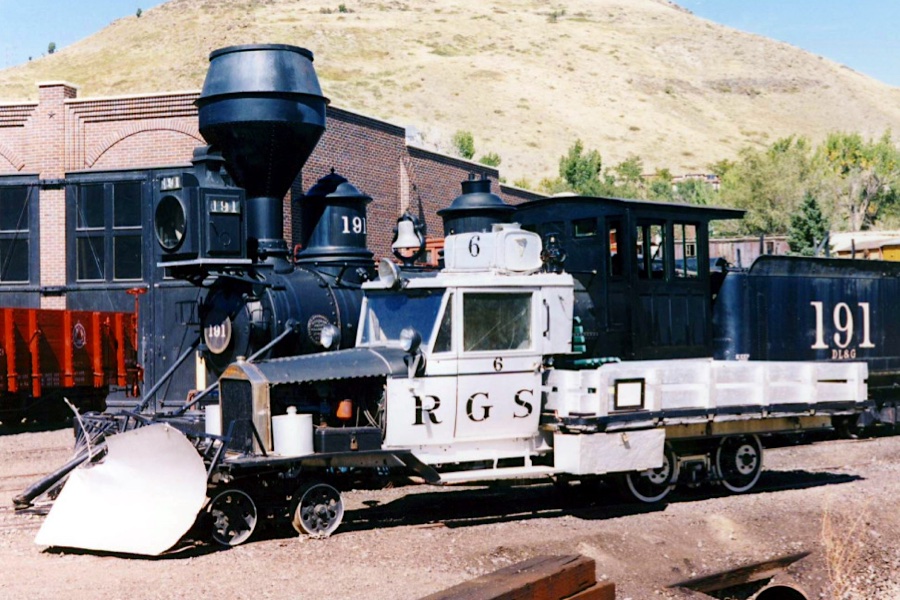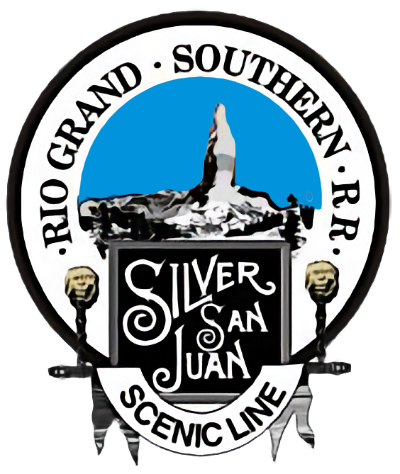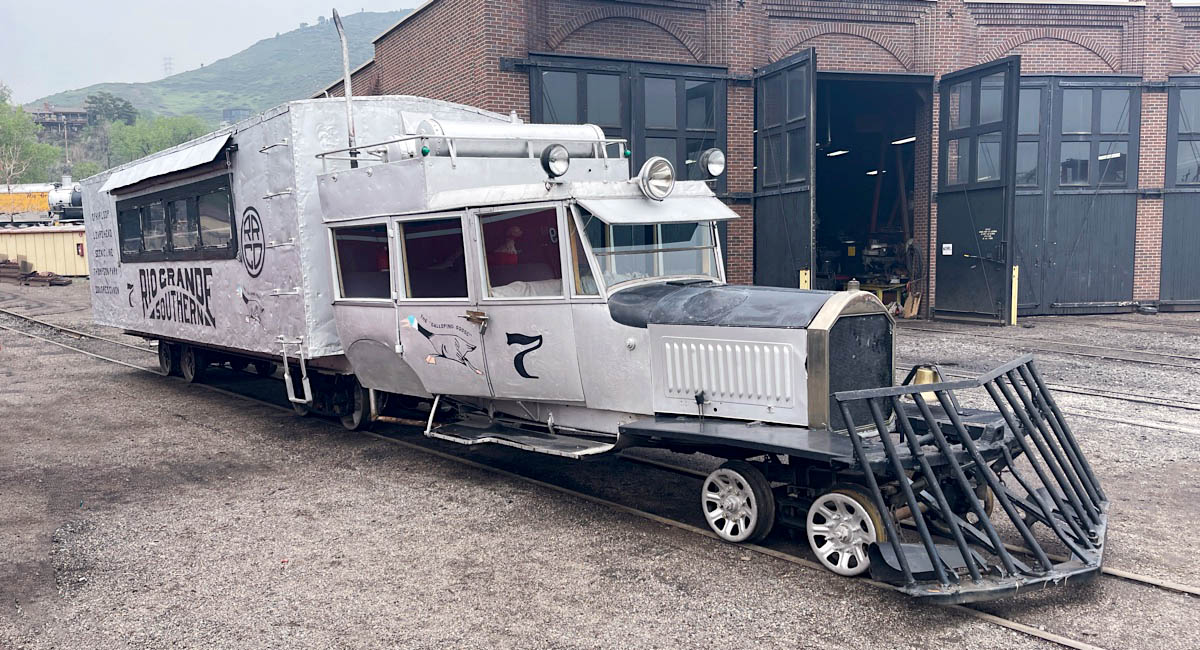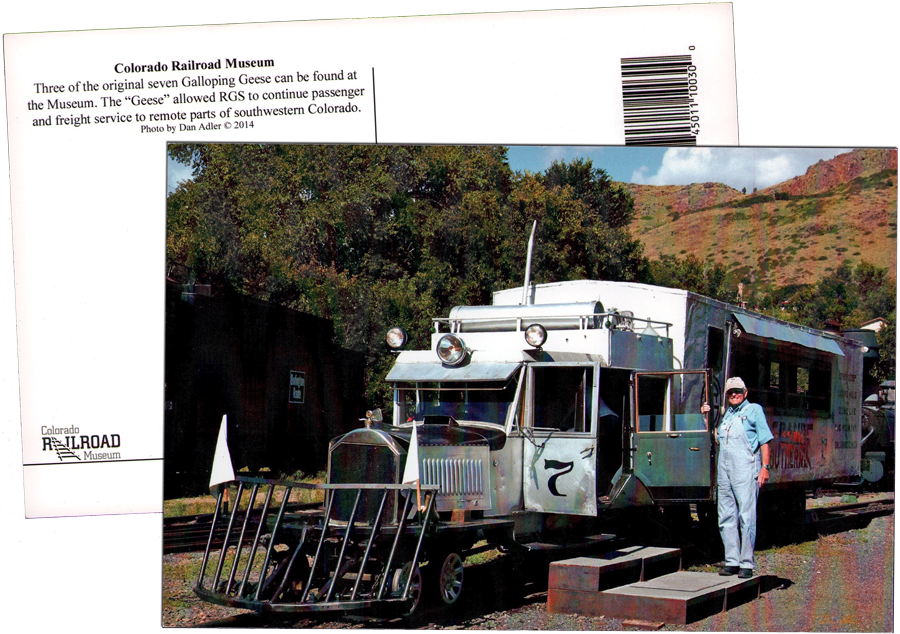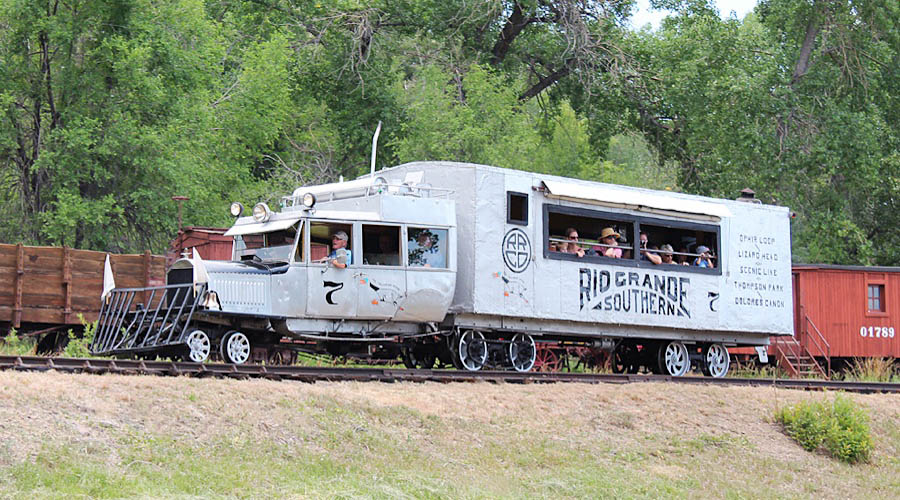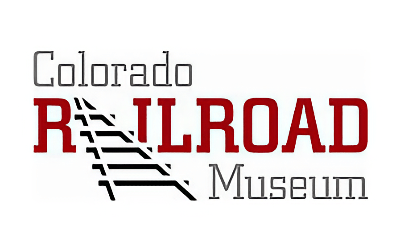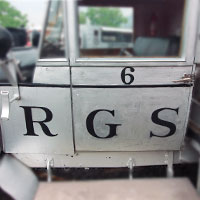 |
Colorado Railroad Museum Galloping Geese |
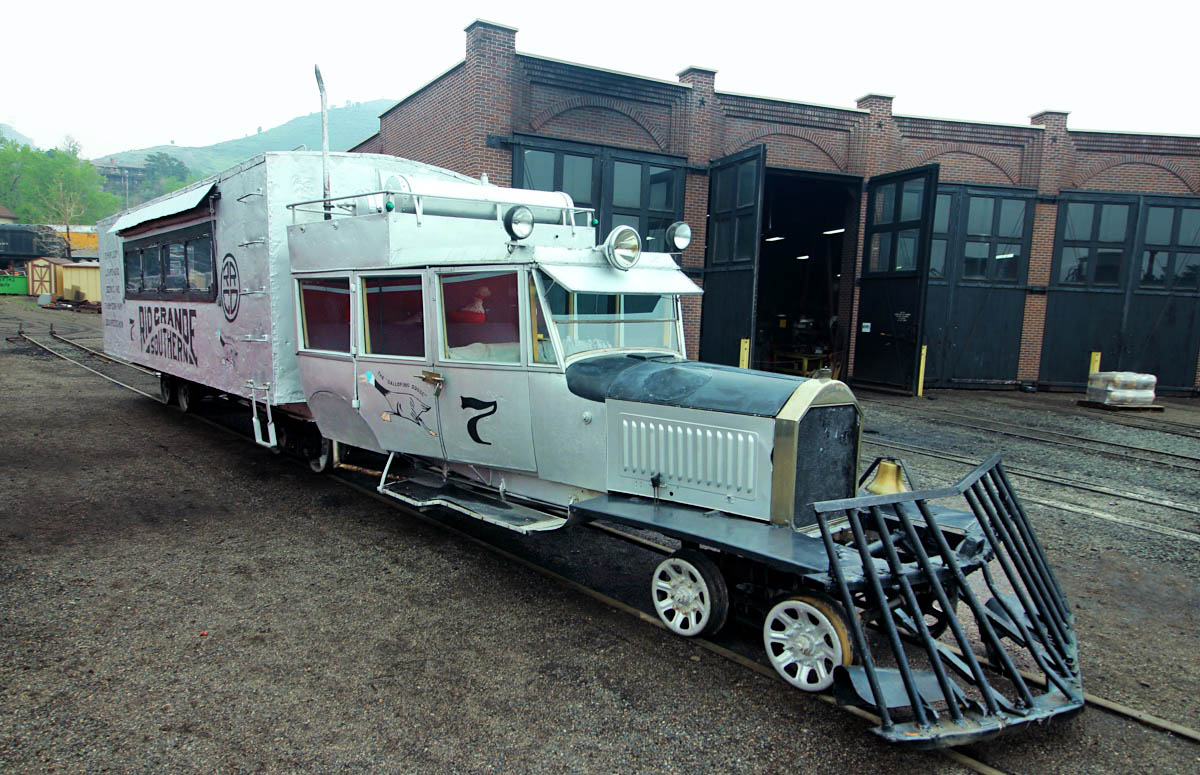
Golden, Co / May 2023 / RWH

Rio Grande Southern “Galloping Geese” Nos. 2 6 & 7
Three of the original seven Galloping Geese can be found at the Museum. Created from a freight box mounted on an automobile frame, the “Geese” allowed RGS to continue passenger and freight service to remote parts of southwestern Colorado. Geese were less costly to build and operate than traditional steam passenger trains. Designed to self-balance on uneven mountain track, the swaying back half of these cars look like geese waddling down the line; hence their popular name.
Colorado Railroad Museum
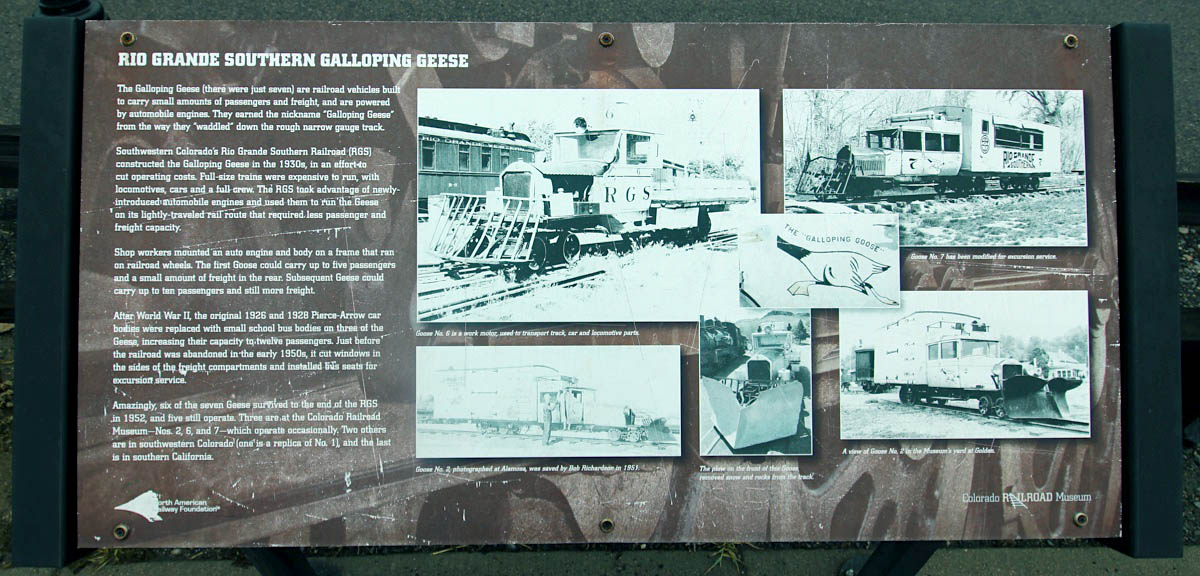
May 2023 / RWH
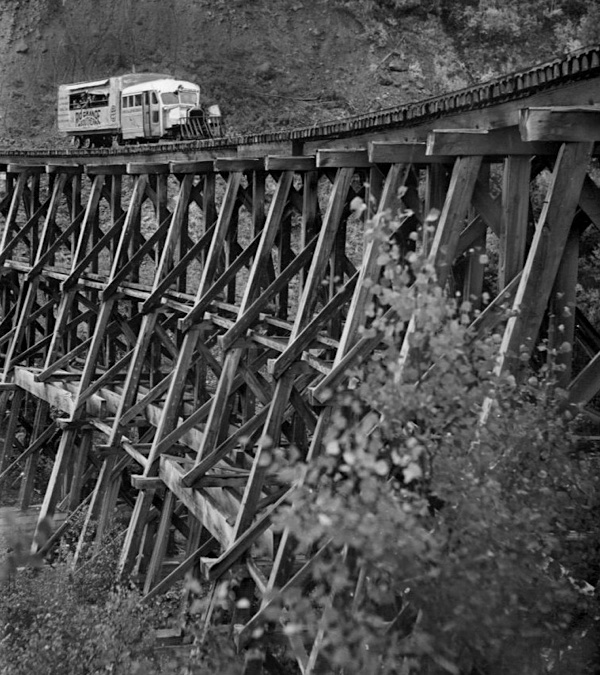 Galloping Goose is the popular name given to a series of seven railcars (officially designated as "motors" by the railroad), built in the 1930s by the Rio Grande Southern Railroad (RGS) and operated until the end of service on the line in the early 1950s. They were derived from full-sized automobiles.
Galloping Goose is the popular name given to a series of seven railcars (officially designated as "motors" by the railroad), built in the 1930s by the Rio Grande Southern Railroad (RGS) and operated until the end of service on the line in the early 1950s. They were derived from full-sized automobiles.
Originally running steam locomotives on narrow gauge railways, the perpetually struggling RGS developed the first of the "geese" as a way to keep its contract to run mail into towns in the Rocky Mountains in Colorado. There was not enough passenger or cargo income to justify continuing the expensive steam train service at then-current levels, but it was believed that a downsized railway would return to profitability. The steam trains would transport heavy cargo and peak passenger loads, but motors would handle lighter loads.
All of the "geese" were built in the railroad's shops at Ridgway, Colorado. Motors were not only less expensive to operate, but were also significantly lighter, thus reducing impact on the rails and roadbeds. This cost saving meant that the first Goose was paid off and making a profit within three weeks of going into service. RGS built more Geese, and operated them until the company abandoned their right-of-way in 1952.
Goose #2
Rio Grande Southern #2


Rio Grande Southern #2
to Colorado Railroad Museum
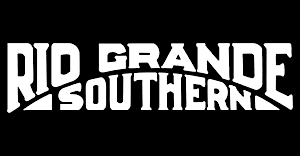
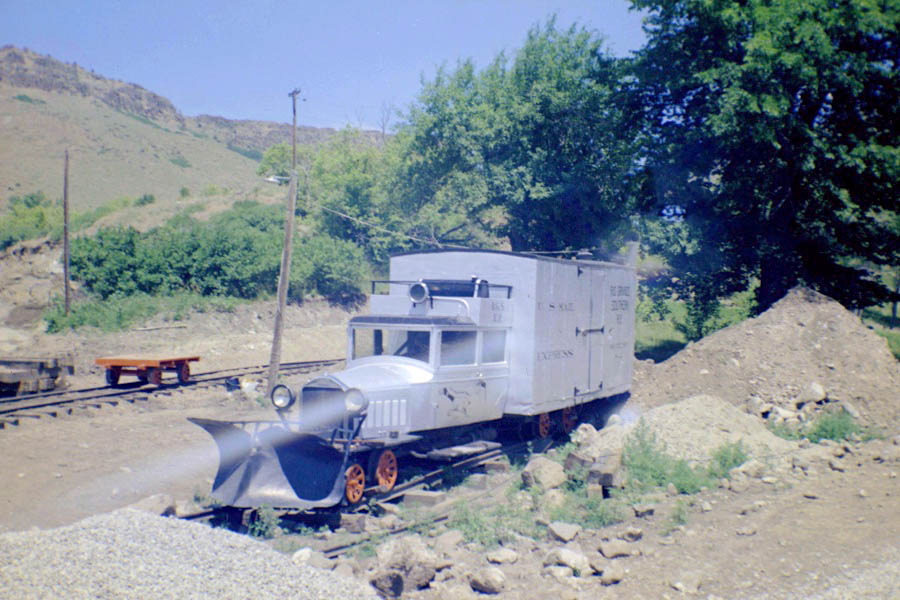
Golden, Co / Jun 1959 / JCH
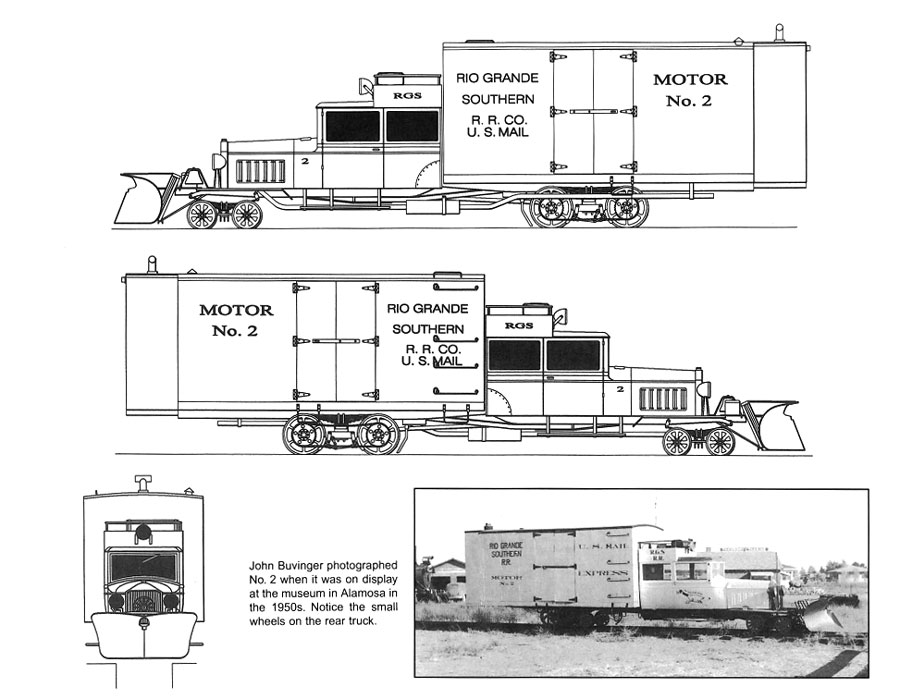
Colorado Railroad Museum
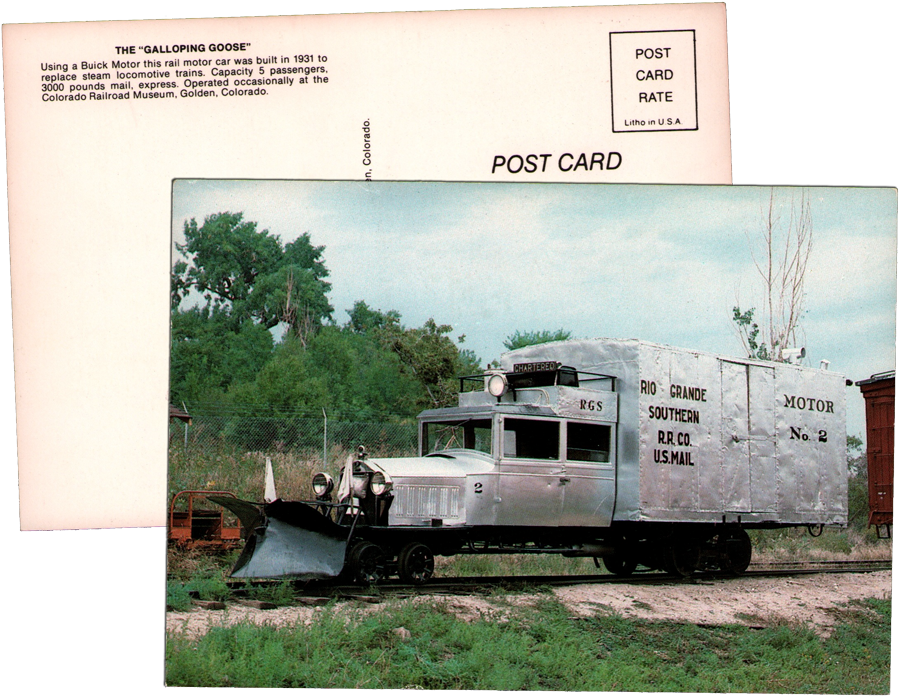
postcard / collection
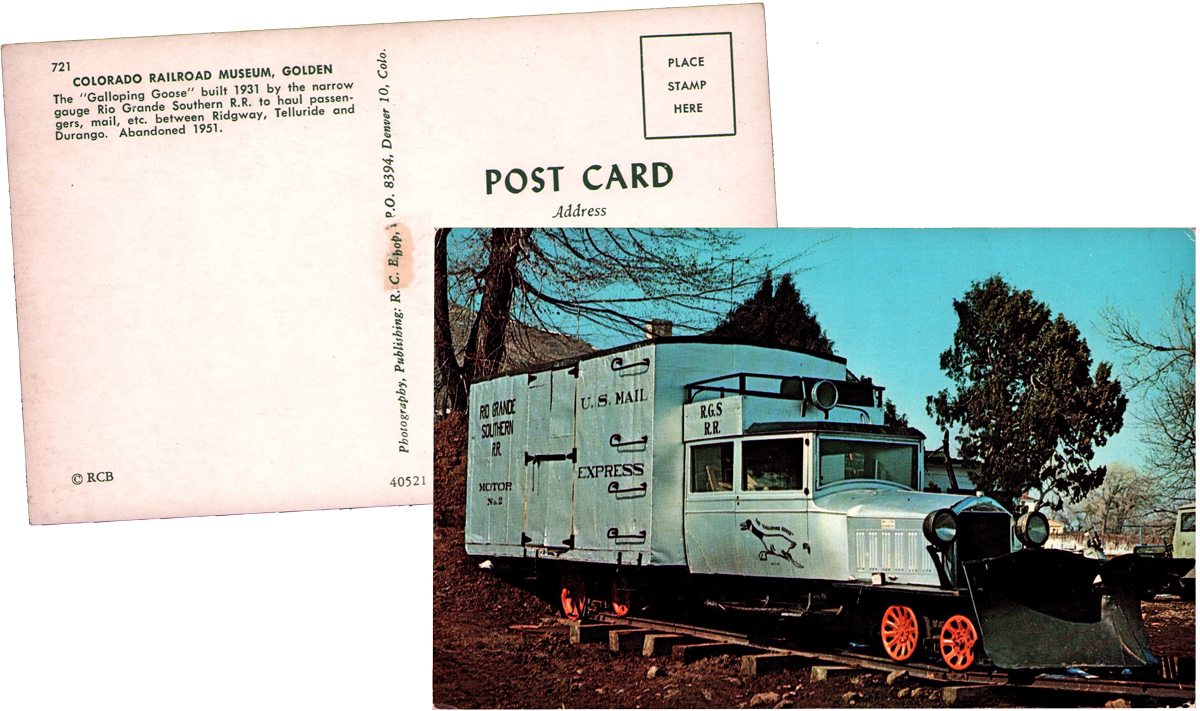
postcard / collection
Goose #6
Rio Grande Southern #6
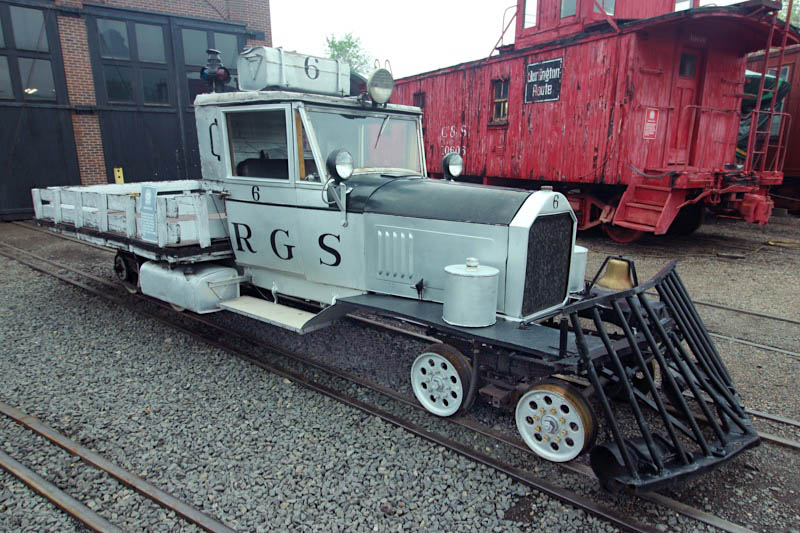
Rio Grande Southern #6
Golden, Co / May 2023 / RWH


Rio Grande Southern #6
to Colorado Railroad Museum

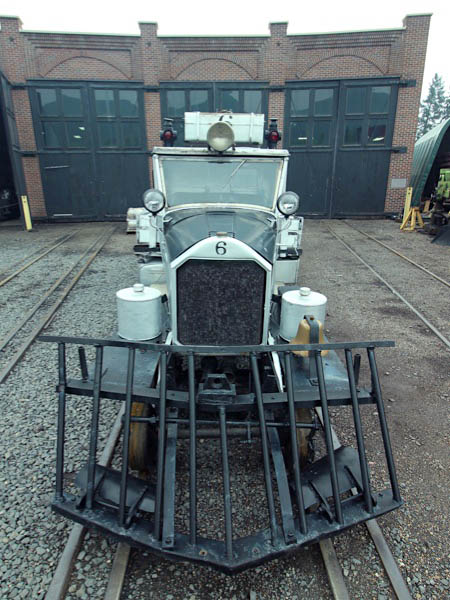
May 2023 / RWH
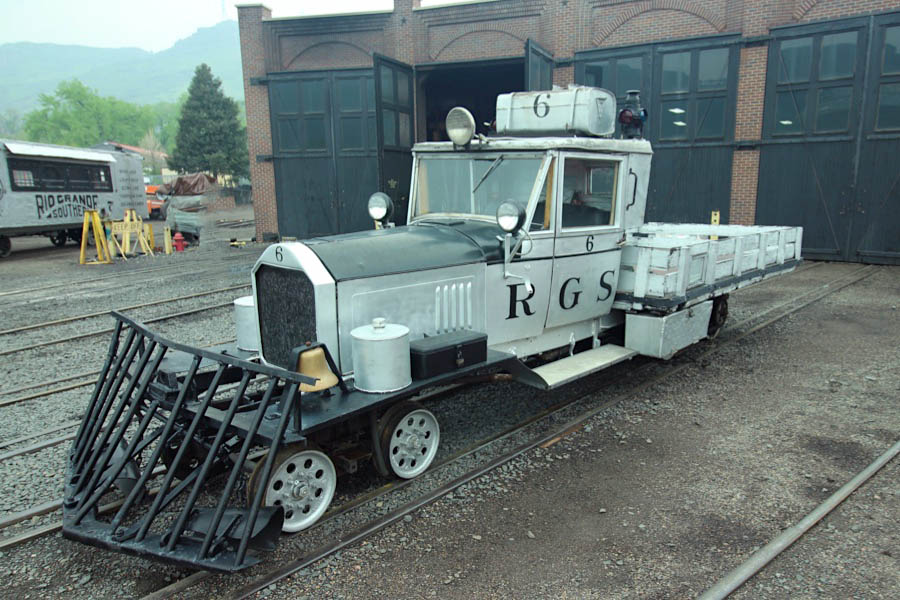
Golden, Co / May 2023 / RWH
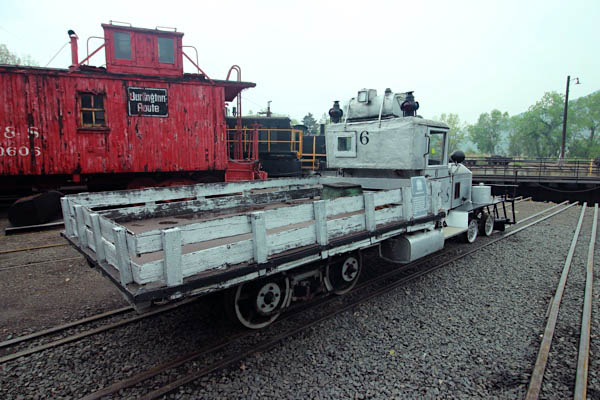
Golden, Co / May 2023 / RWH
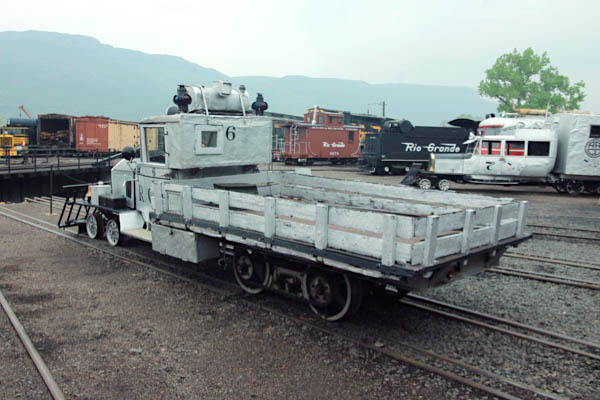
Golden, Co / May 2023 / RWH
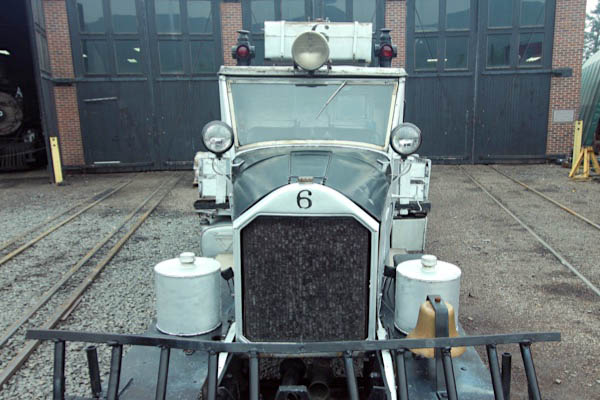
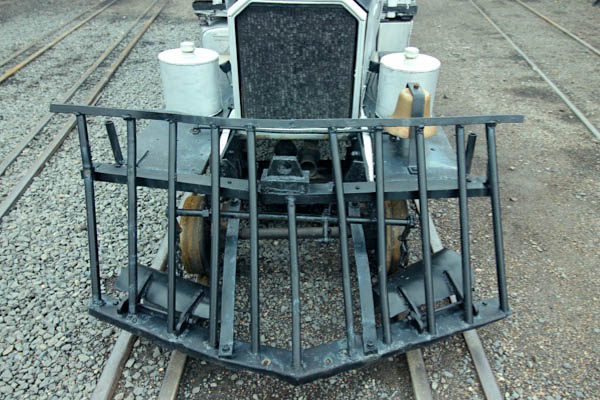
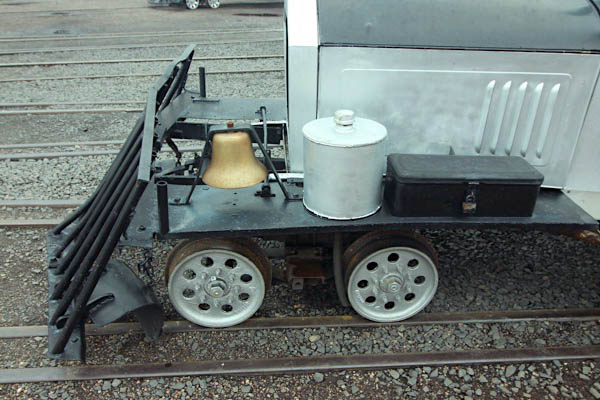
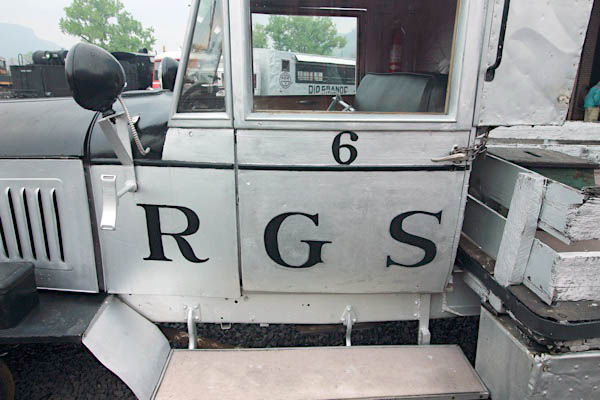
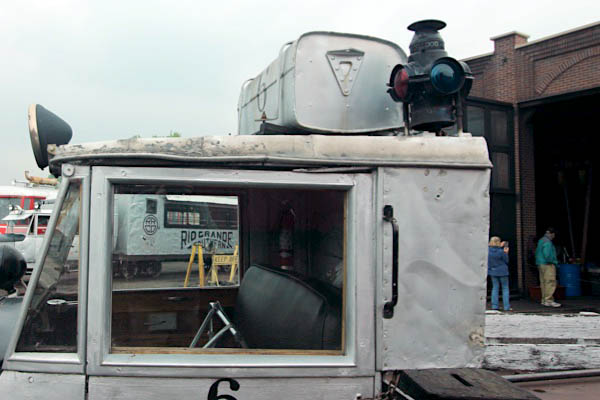
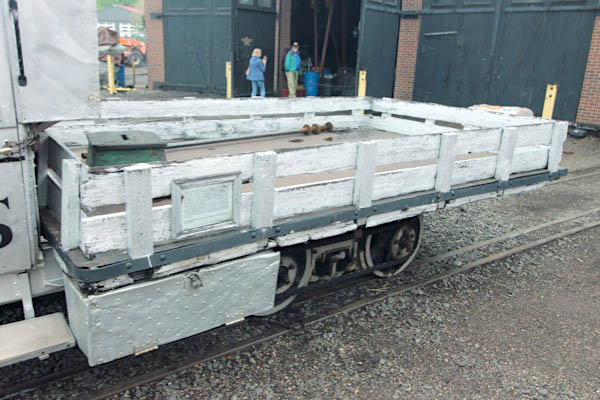
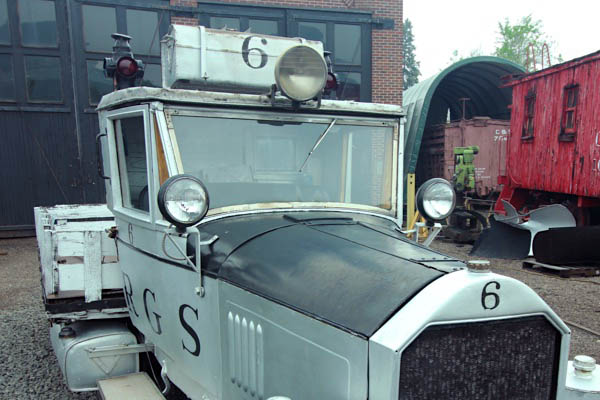
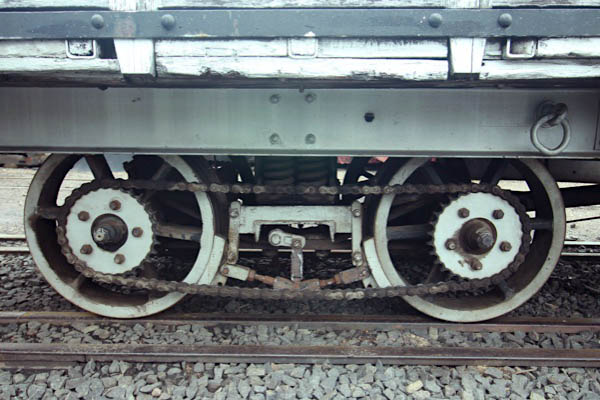
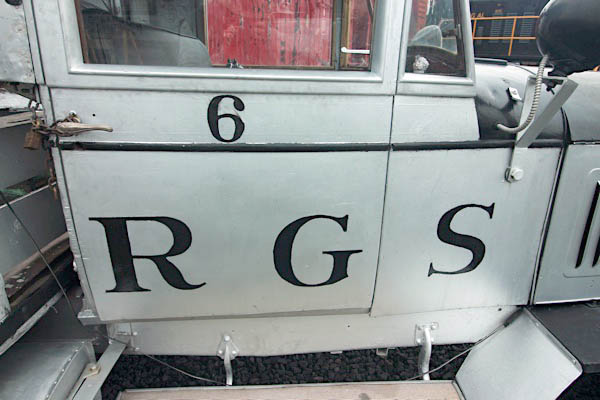
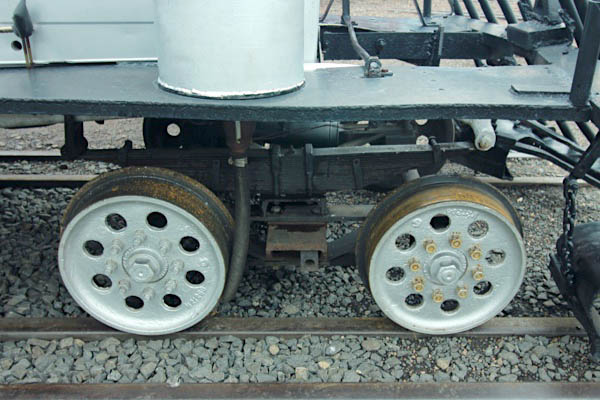
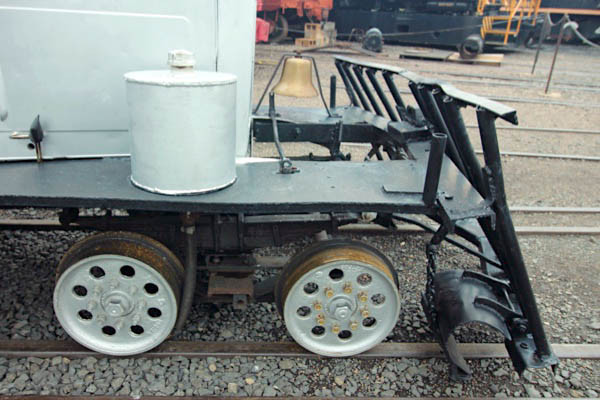
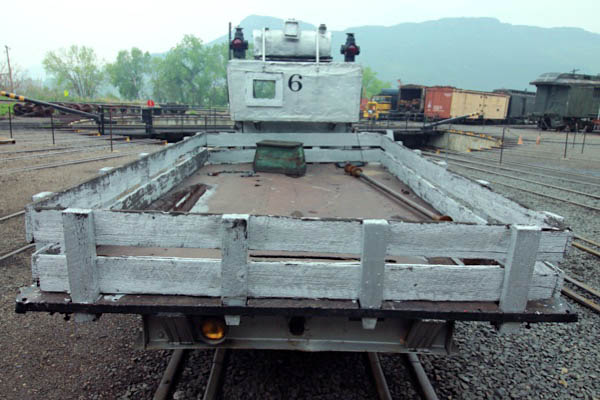
May 2023 / RWH
Goose #7
Rio Grande Southern #7
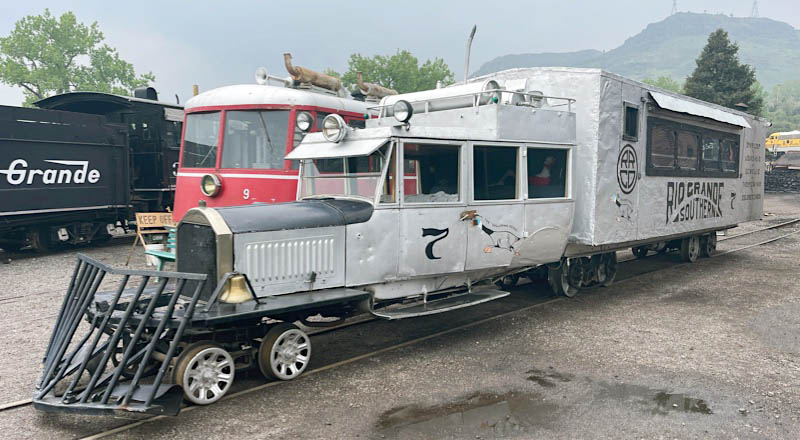
Rio Grande Southern #7
Golden, Co / May 2023 / RWH


Rio Grande Southern #7
to Colorado Railroad Museum

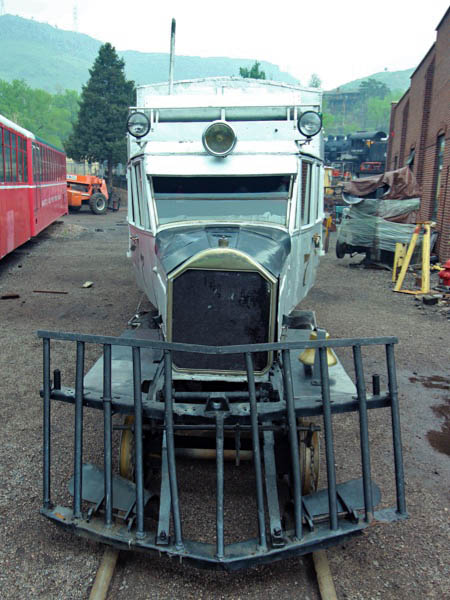
May 2023 / RWH
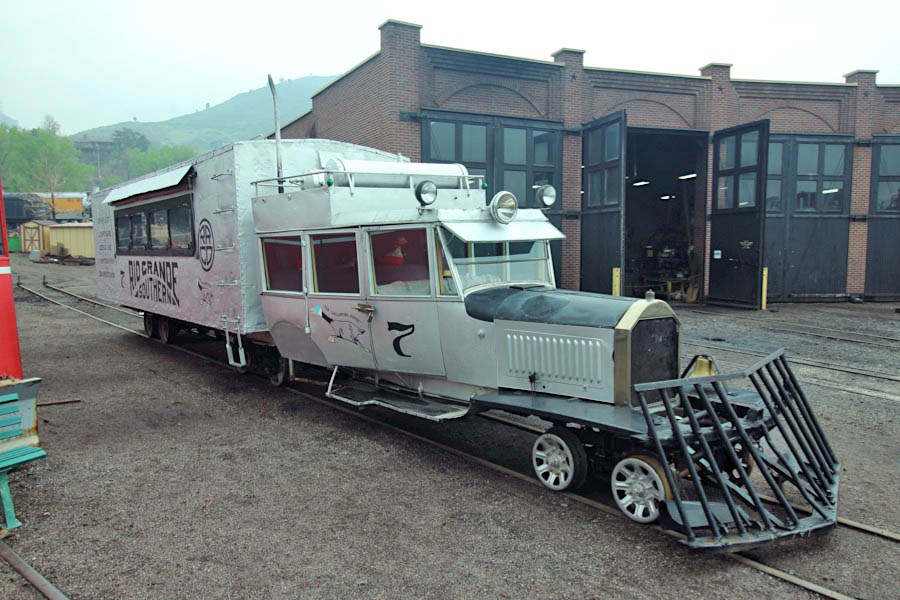
Golden, Co / May 2023 / RWH
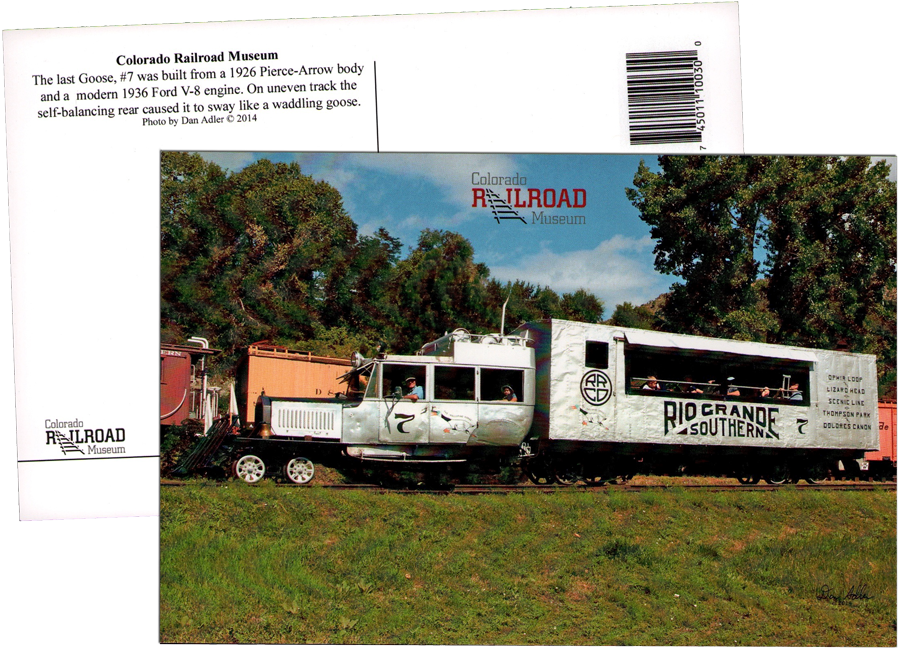
postcard / collection
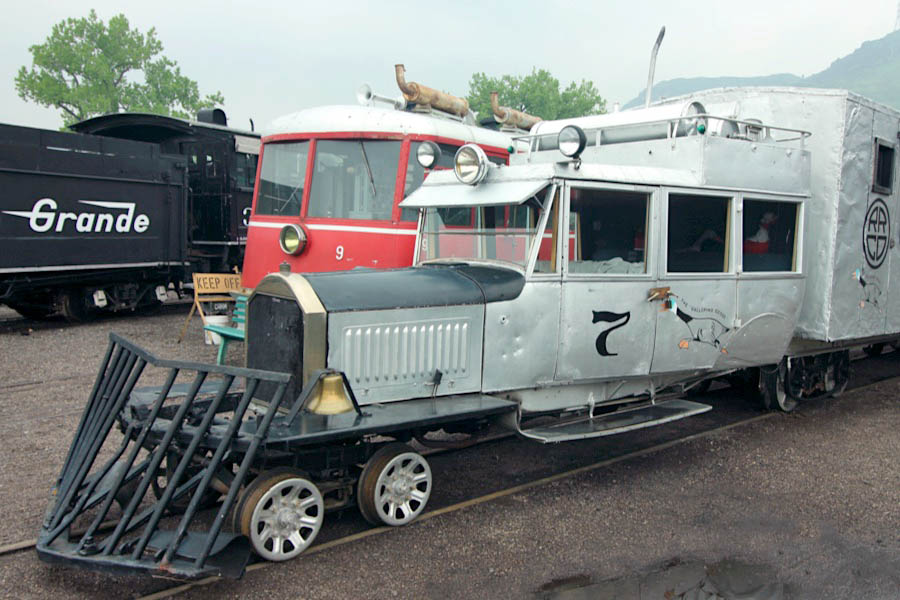
May 2023 / RWH
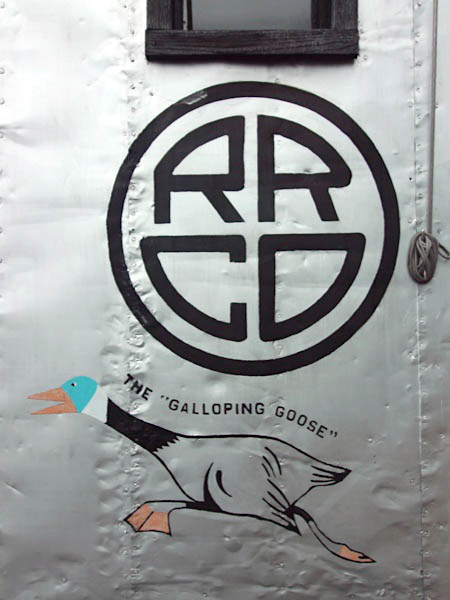
May 2023 / RWH
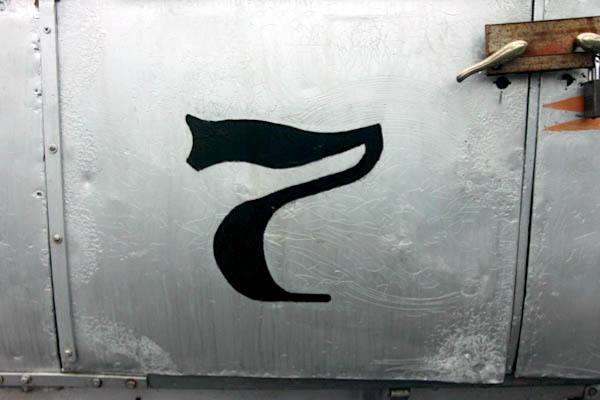
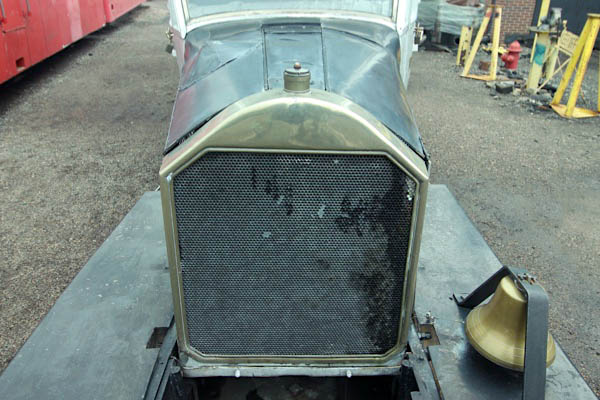
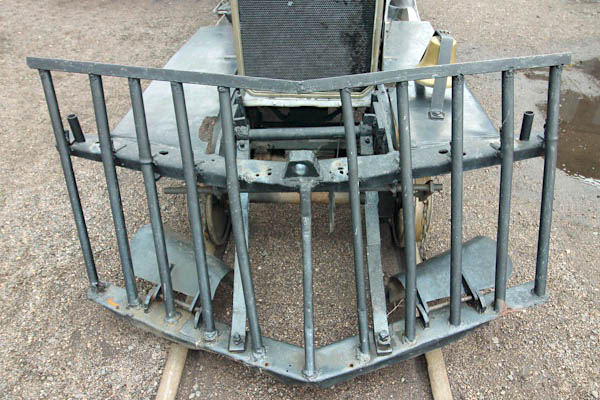
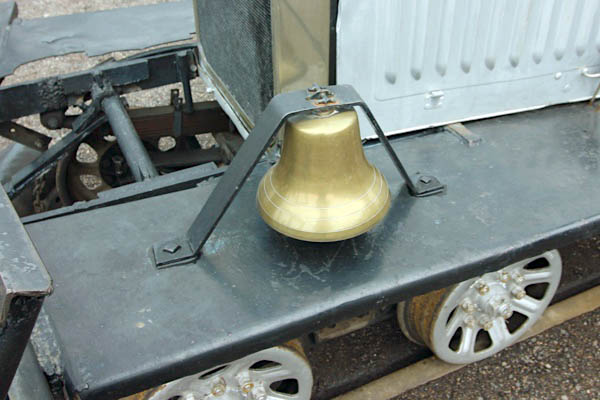
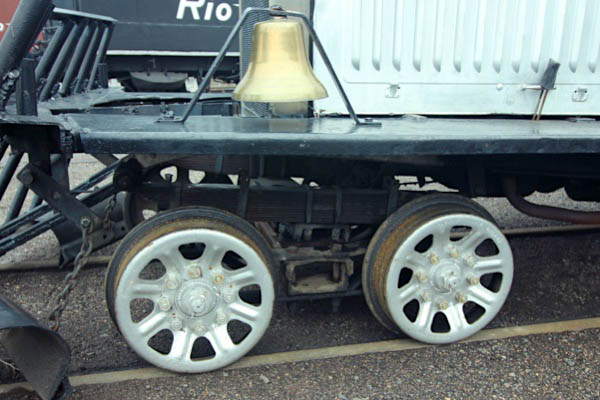
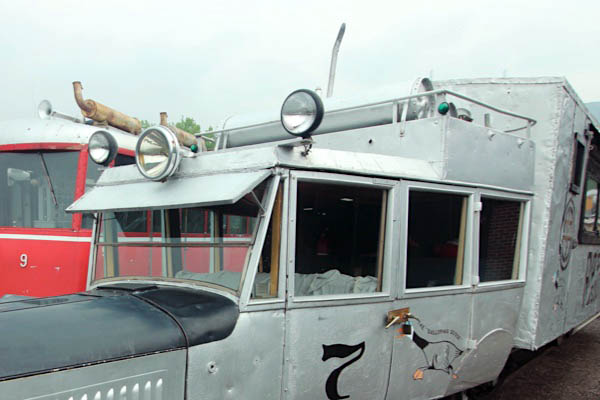
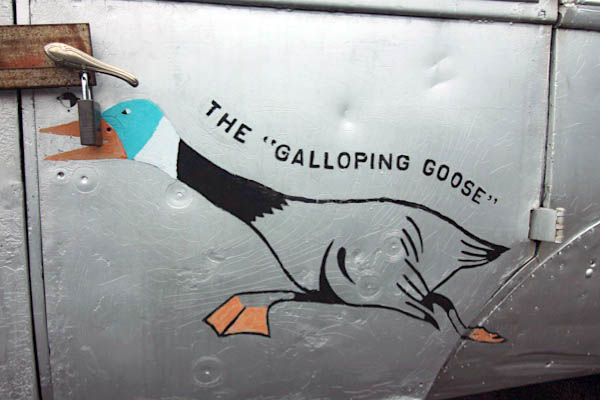
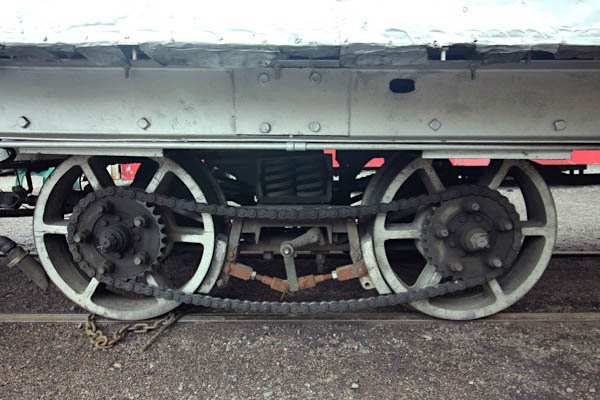
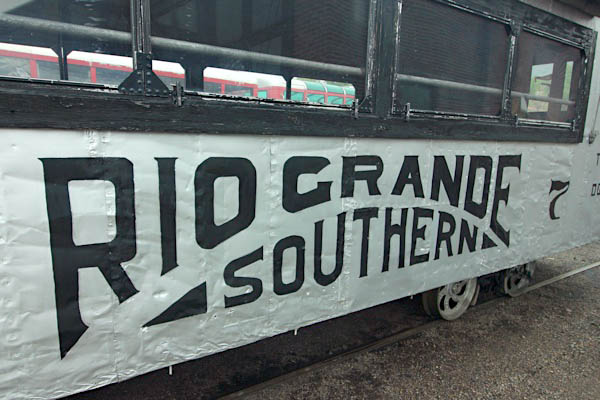
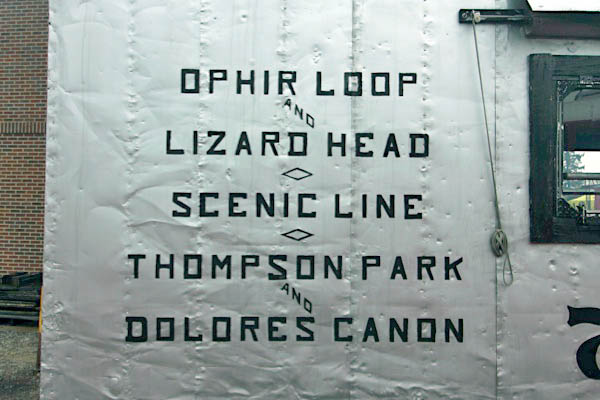
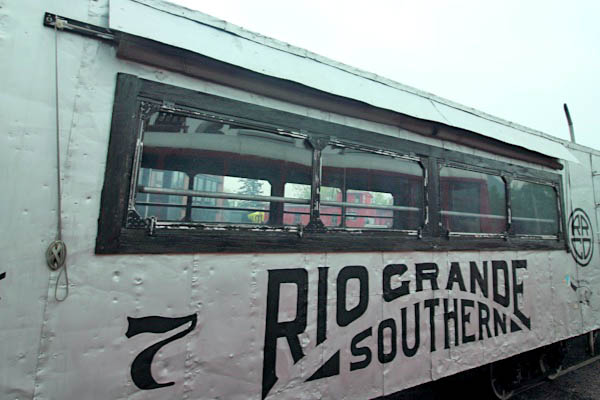
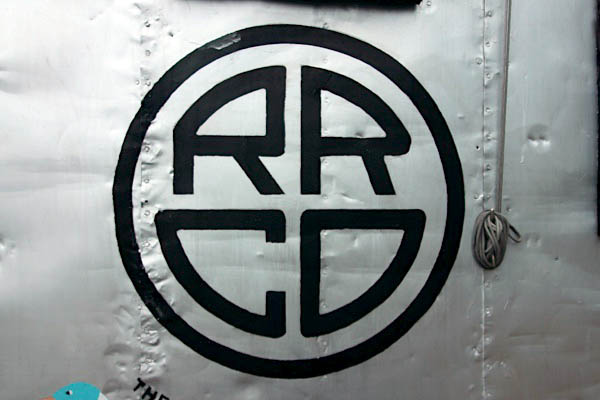
May 2023 / RWH
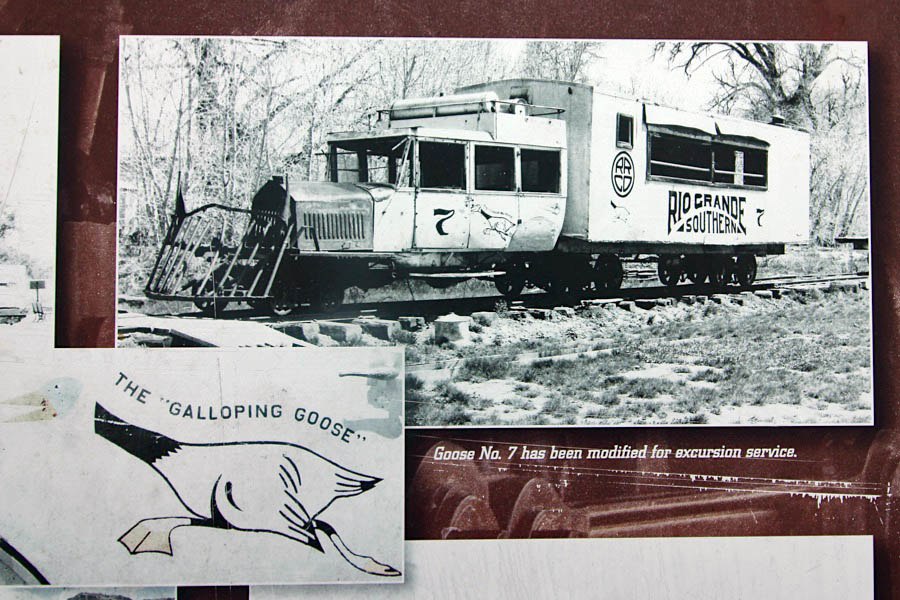
May 2023 / RWH

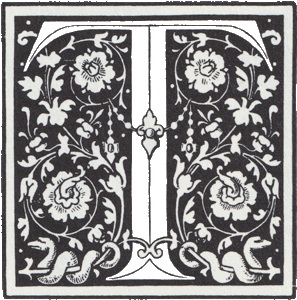 hroughout the Great Depression, World War II and all the way to abandonment in 1952, the RGS continued to operate steam engine powered trains on an irregular schedule as needed for hauling heavy freight and livestock shipments. However, by mid-1933, a Motor – a Galloping Goose – was used for hauling most passengers, small amounts of freight and the U.S. Mail.
hroughout the Great Depression, World War II and all the way to abandonment in 1952, the RGS continued to operate steam engine powered trains on an irregular schedule as needed for hauling heavy freight and livestock shipments. However, by mid-1933, a Motor – a Galloping Goose – was used for hauling most passengers, small amounts of freight and the U.S. Mail.
From 1891 until 1933, the RGS carried passengers and mail in coaches and mail cars on regularly scheduled passenger trains. After 1933, the only choice for folks traveling through far southwestern Colorado by rail was the not-so-spacious accommodations of a waddling, honking Galloping Goose. Sometimes the ride included such entertainment as going over the top of Lizard Head Pass in a blinding blizzard in an unheated Goose or waiting somewhere along the line for floodwaters to subside, but in most cases it was “the only way to fly.”
After World War II, the old muddy wagon roads slowly became the more like highways, and trucks and passenger buses began to rob the railroad of business. In 1950, the federal government did not renew the U.S. Mail contract with the RGS and financially, that was the last straw. Tourist passenger traffic during the summers of 1950 and 1951 did not generate enough revenue to keep the failing railroad alive.
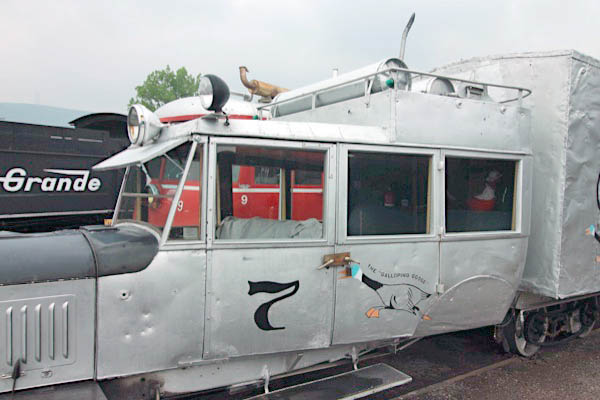
May 2023 / RWH
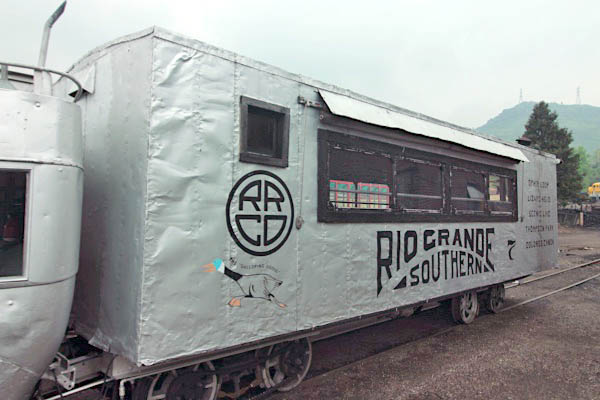
May 2023 / RWH
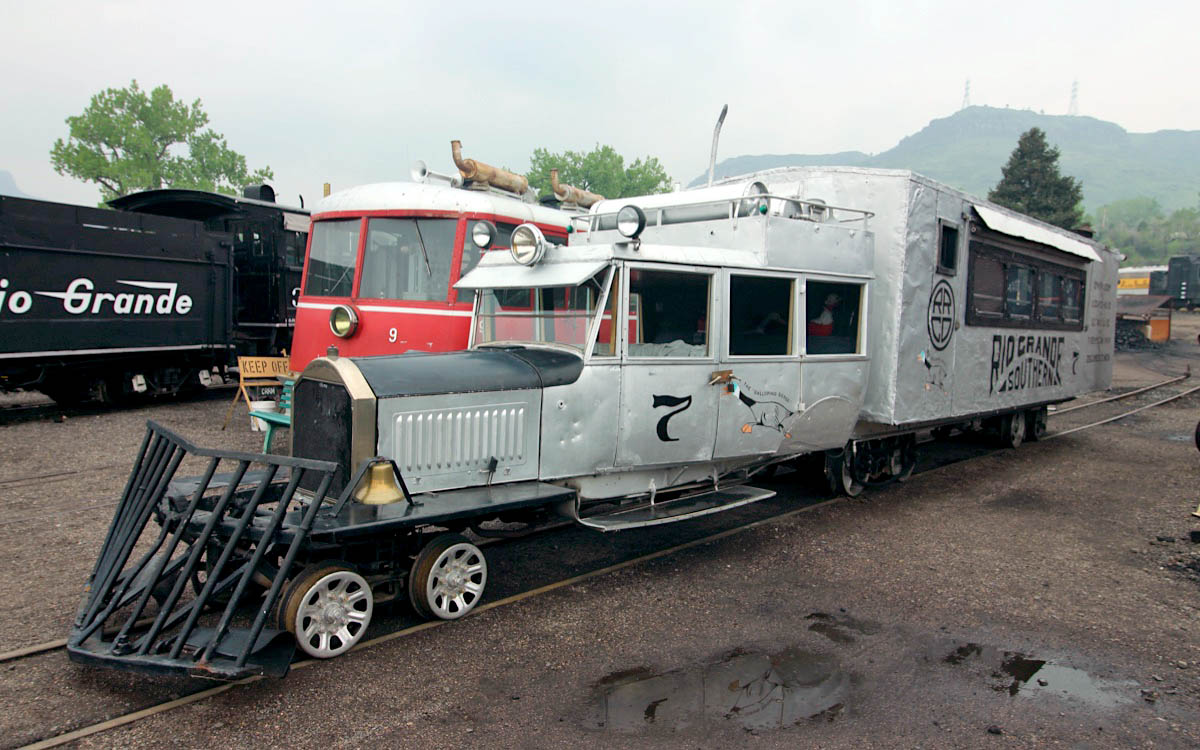
Golden, Co / May 2023 / RWH
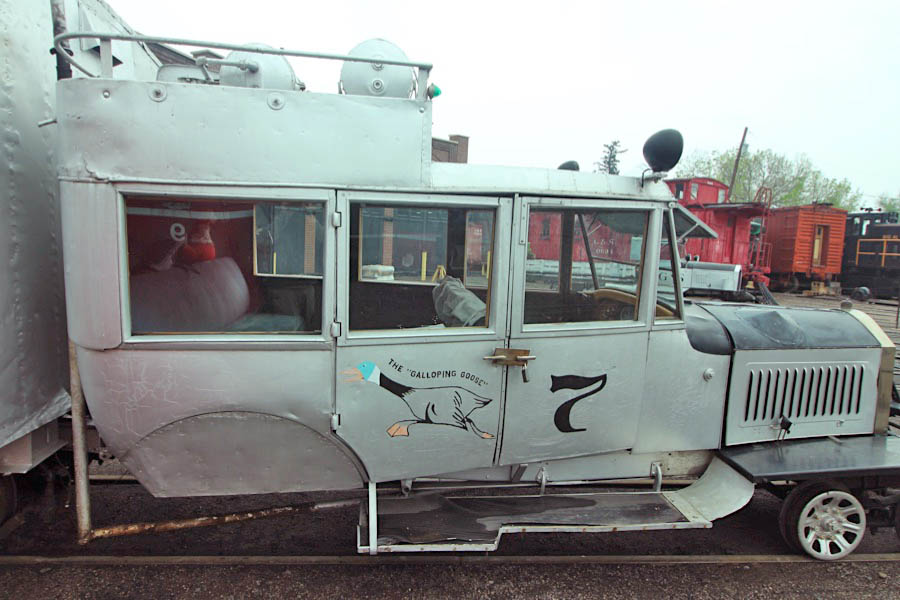
May 2023 / RWH
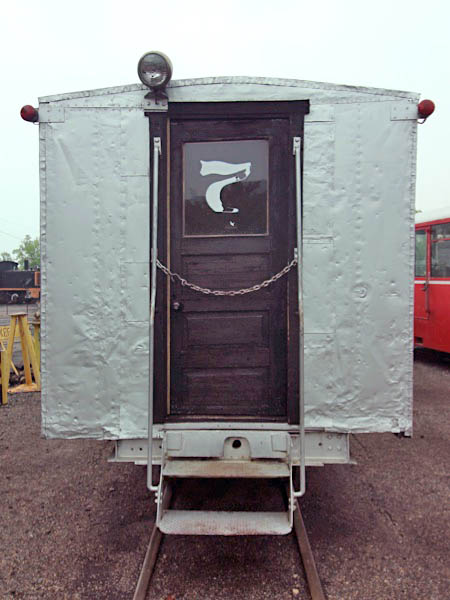
May 2023 / RWH
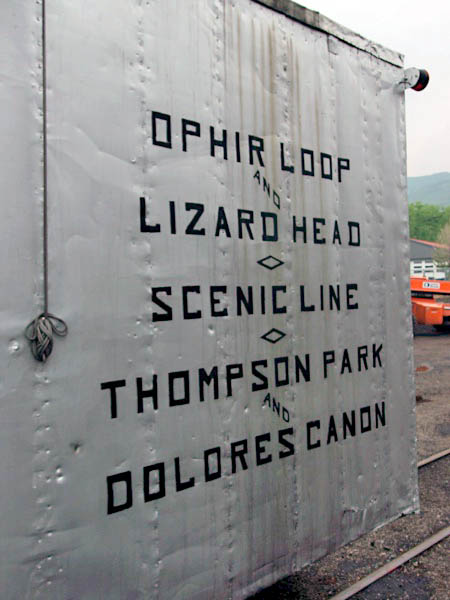
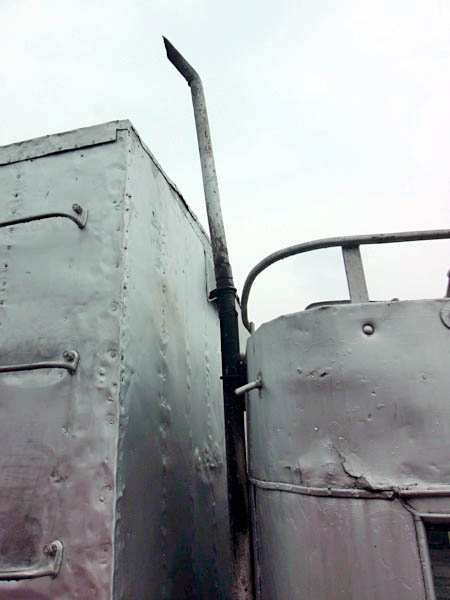
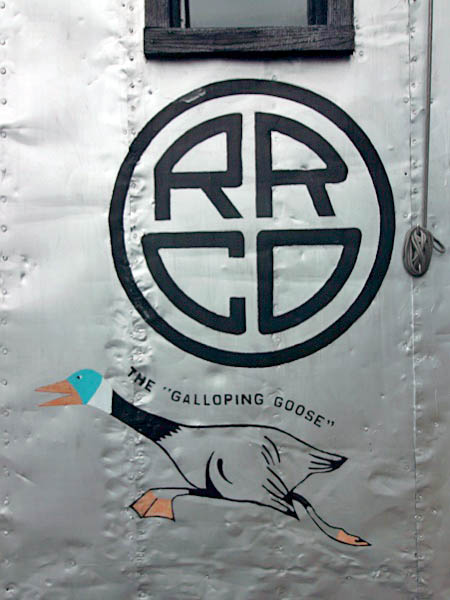
Golden, Co / May 2023 / RWH
Links / Sources
- Galloping Goose Historical Society website
- Rio Grande Southern "Galloping Goose" website
- Wikipedia article for Galloping Geese
